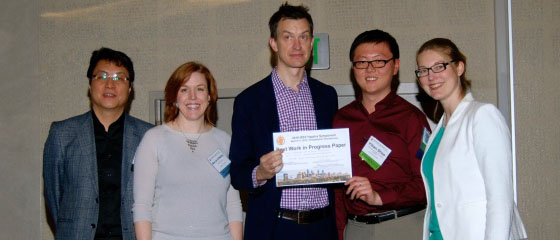Award Winners
Best Paper Award ($1000, Sponsored by Force Dimension)
Best Student Presentation Award ($1000, Sponsored by Mide)
A short list of candidate technical papers was determined based on reviewer comments and scores, Associate Editor recommendations, and input from the Publications Chair. The panel of judges reviewed all of the papers and attended the presentations during the conference. The best paper award was given to the paper deemed to be of highest quality in terms of innovation, rigor, impact, quality and presentation. The student best presentation award was given to the student first author of a paper from this list who gave, in the judges' opinion, the best presentation of the work, embodying the innovation, quality, rigor, and impact of the contribution.
Winners:
- Best Paper Award
A Wearable Fabric-based Display for Haptic Multi-Cue Delivery
Matteo Bianchi, Edoardo Battaglia, Mattia Poggiani, Simone Ciotti, and Antonio Bicchi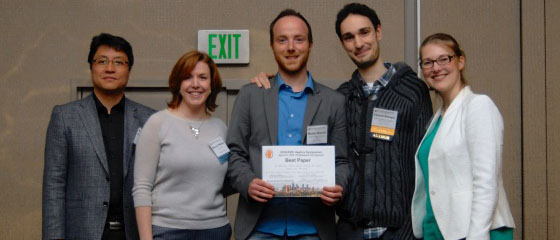
- Honorable Mention for Best Paper Award
Learning Constituent Parts of Touch Stimuli from Whole Hand Vibrations
Yitian Shao and Yon Visell - Best Student Presentation Award
Tactile Paintbrush: A Procedural Method for Generating Spatial Haptic Texture
David Meyer, Michael Peshkin, and Ed Colgate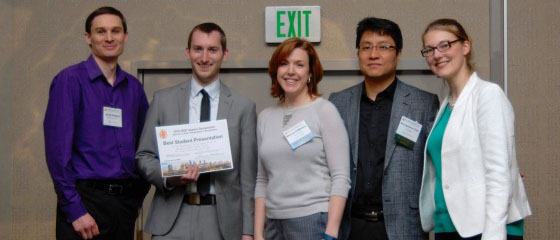
- Honorable Mention for Best Student Presentation Award
Space-time Interactions and the Perceived Location of Thermal Stimulation
Anshul Singhal and Lynette Jones
The other three finalists for Best Paper and Best Student Presentation were:
- Evaluating Tactile Guidance Cues for Percutaneous Needle Insertion Tasks by Jeremy Tsai, Sukanya Basu, and Ann Majewicz
- Exploring Haptic Working Memory as a Capacity-Limited Information Channel by Rachel Lerch, Hengjun Cui, Soham Patwardhan, Yon Visell, and Chris Sims
- Viscous Textures: Velocity Dependence in Fingertip-Surface Scanning Interaction by Daniel Brewer, David Meyer, Michael Peshkin, and Ed Colgate
Best Demonstration Award ($1000, Sponsored by Tactai)
All demonstrations were eligible for the best demonstration award. Finalists and winners were chosen by the panel of jurors based on innovation, quality, and presentation of the demonstration.
Winner:
- Best Demonstration Award
The hRing as a Wearable Haptic Interface for Extra Robotic Fingers
Giovanni Spagnoletti, Irfan Hussain, Claudio Pacchierotti, Gionata Salvietti, and Domenico Prattichizzo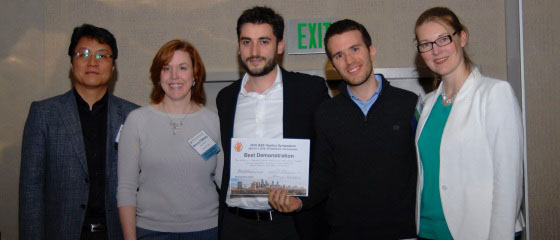
The other three finalists for Best Demonstration were:
- A Scalable 4x4 Graphical Tablet Based on Shape Memory Polymers
Nadine Besse, Juan Jose Zarate, Samuel Rosset, Luca Brayda, and Herbert Shea - Macaron: An Online, Open-Source Haptic Editor
Oliver S. Schneider and Karon E. MacLean - Toward Open-Source Portable Haptic Displays: An Interactive Physics Demo with the Haplet
Colin Gallacher, Arash Mohtat, Steve Ding, and József Kövecses
Student Innovation Challenge Award (Sponsored by Google ATAP, Disney Research, and the Technical Committee on Haptics)
Participants created applications with the Vybe haptic gaming pad to solve a real-world problem. Awards were presented to the top submissions. Overall best interaction and Honorable Mention were determined by a panel of judges based on quality of haptic feeling, originality/creativity, and utility. The people’s choice award was determined by popular vote.
Winners:
- Overall Best Interaction ($1000)
Real-Time Haptic Enhanced Tele-Rehabilitation System for Physical Therapy
Cristina Ramirez Fernandez, Nirvana Estivalis Green Morales, David Bonilla Castillo, and Oliver Pabloff Angeles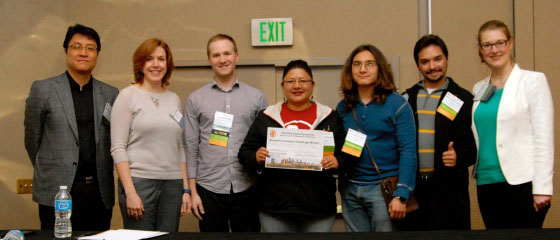
- Honorable Mention ($500)
MOVieVib: Vibrotactile Cues of Camera Movement in 4D Films
Jongman Seo, Jaebong Lee, and Junsuk Park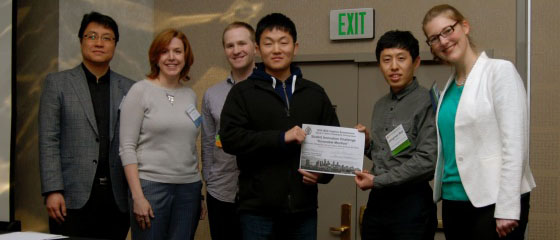
- People's Choice ($500)
Tele Teku-Teku
Daniel Gongora, Hideto Takenouchi, Wenchao Gu, and Yoshihiro Kato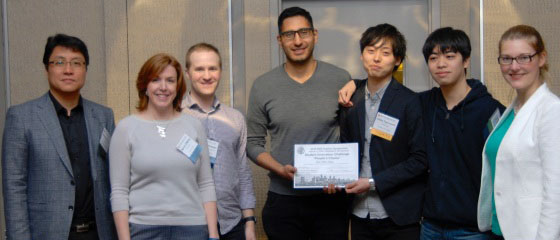
Best Work-in-Progress Paper Award ($500)
All WIP papers were eligible for this award. The winner was chosen by vote of conference attendees based on the teaser, the poster, and the WIP paper itself. The votes were tallied by the awards committee.
Winner:
- Toward a Wearable Tactile Sensory Amplification Device: Transfer Characteristics and Optimization
Mercedes Chartier, Neha Thomas, Yitian Shao, and Yon Visell